Once a staple food for peasants. Rumoured by some to be an aphrodisiac. Chewed by some, and swallowed whole by others. Oysters are today one of the world’s most prized and highly-priced dishes, adorning the menus of the world’s most fashionable restaurants.
According to Seafish — the UK’s public body supporting the UK fishing industry — China holds top spot for global oyster cultivation, producing over 5 million tonnes a year; but these are almost all consumed domestically. The rest of the world meanwhile produces around 1 million tonnes annually; yet only 50,000 tonnes of these are traded internationally.
Of course, these valuable oysters need to reach discerning international consumers in tip-top condition, so it’s a typical job for airfreight. But what are the challenges of moving this precious commodity? To find out, Hactlink spoke to one of the major producers in France, two airlines and a leading restaurateur:
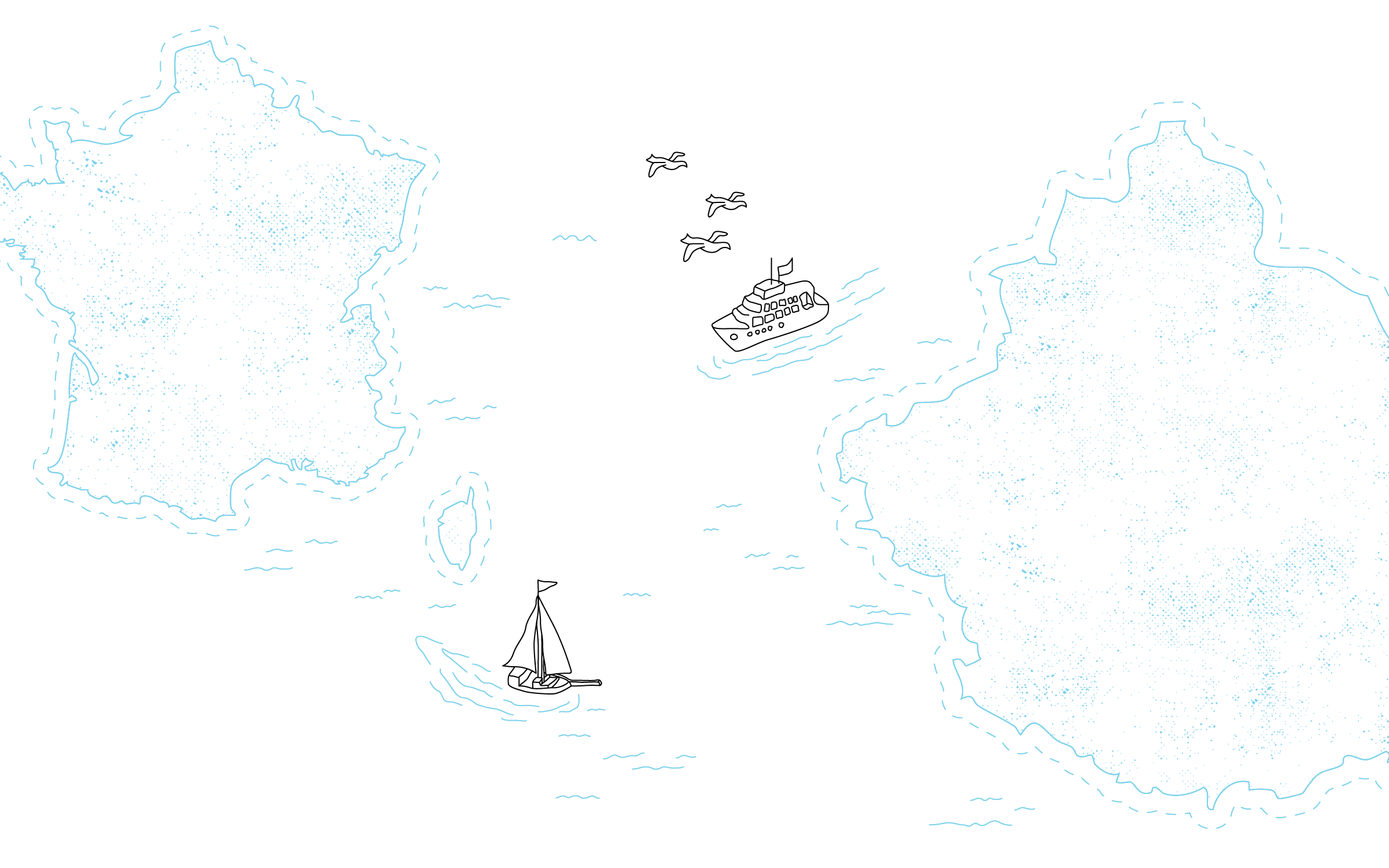
Huîtres Gilles Massé is a major producer in the southwest of France, whose oysters bear the “Marennes Oléron” Protected Geographical Indication (PGI) designation — an EU certification indicating that their characteristics, linked to the area in which production takes place, are in accordance with well-defined requirements. The oysters’ “Red Label” is an additional French designation indicating they meet strict requirements at all stages, notably during production.
Huîtres Gilles Massé oysters have always been grown in “Claires” (a process unique to the Marennes Oléron PGI), which gives them a less oceanic flavour than those raised in the open sea. Claire finishing provides an environment rich in minerals and the nutrients needed for phytoplankton, the food source of the oysters.
Oysters reproduce in summer; if the temperature, salinity and other conditions are right, they settle after fifteen days to become a young oyster, called a “spat”. Oyster farmers place “collectors” in the ocean to gather them, where the young settled oyster begins feeding and growing.
At one year old the spat is detached from its collector, a process known as “détroquage”; this requires skill and a delicate touch. After this, the oyster is placed in the ocean for two years, and carefully monitored — the main threats being storms and predators. The role of ocean tides is critical during this growing phase.
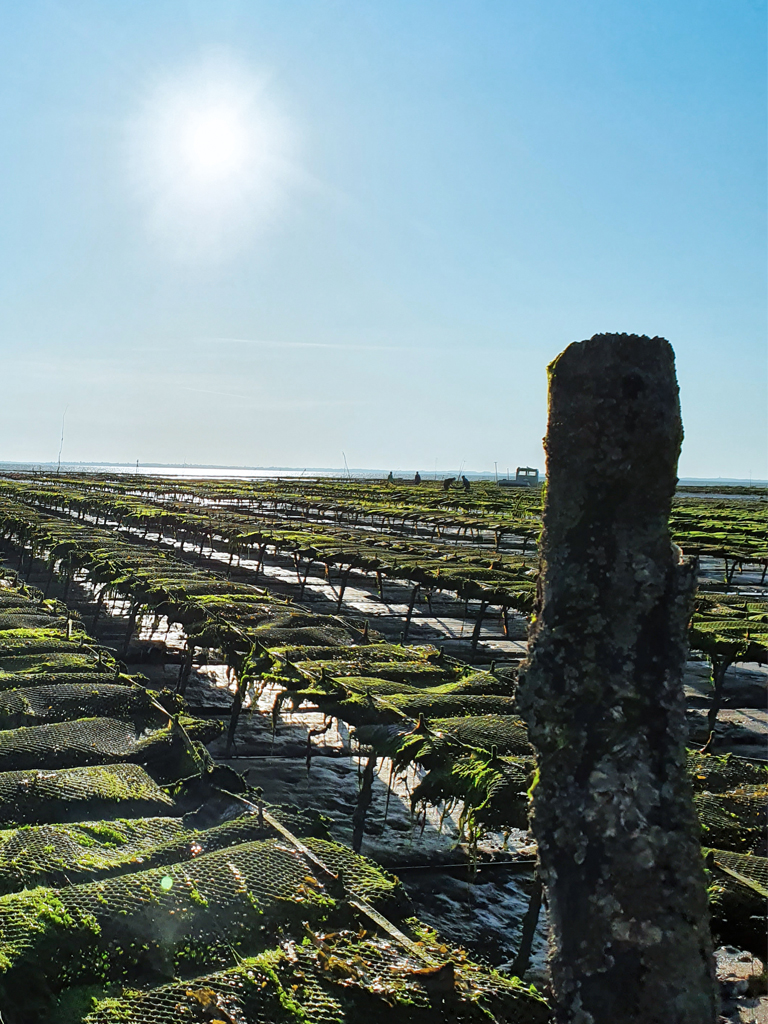
Audited
From La Claire to the table, Huîtres Marennes Oléron oysters are meticulously controlled and monitored both internally and externally. Each year, oyster farms are audited and the health quality of their product is guaranteed by a microbiological analysis laboratory. Meanwhile all sales outlets are inspected every year to maintain a high standard of selling conditions.
Huîtres Gilles Massé says that shipping oysters internationally is necessarily complex, requiring a health certificate for each shipment, which must be completed accurately to avoid seizure and destruction.
The oysters are shipped in approved wooden crates (“bourriches”), that allow the shells to lie flat and tight, which preserves their condition. Consumption should take place no more than 10 days after packing, and temperatures must remain between 4°C and 8°C throughout transit; the shorter the transit time, the longer customers can keep the oysters.
“We are very demanding when it comes to packaging our oysters. Our aim is for the entire order to arrive in perfect condition and with no losses,” says Raphael Massé, Manager of Huîtres Gilles Massé. In fact, only one delivery was lost in the past year, due to the carrier misplacing the health certificate. “We’re satisfied with airfreight, and forwarder communication is quick and easy,” Raphael concludes.
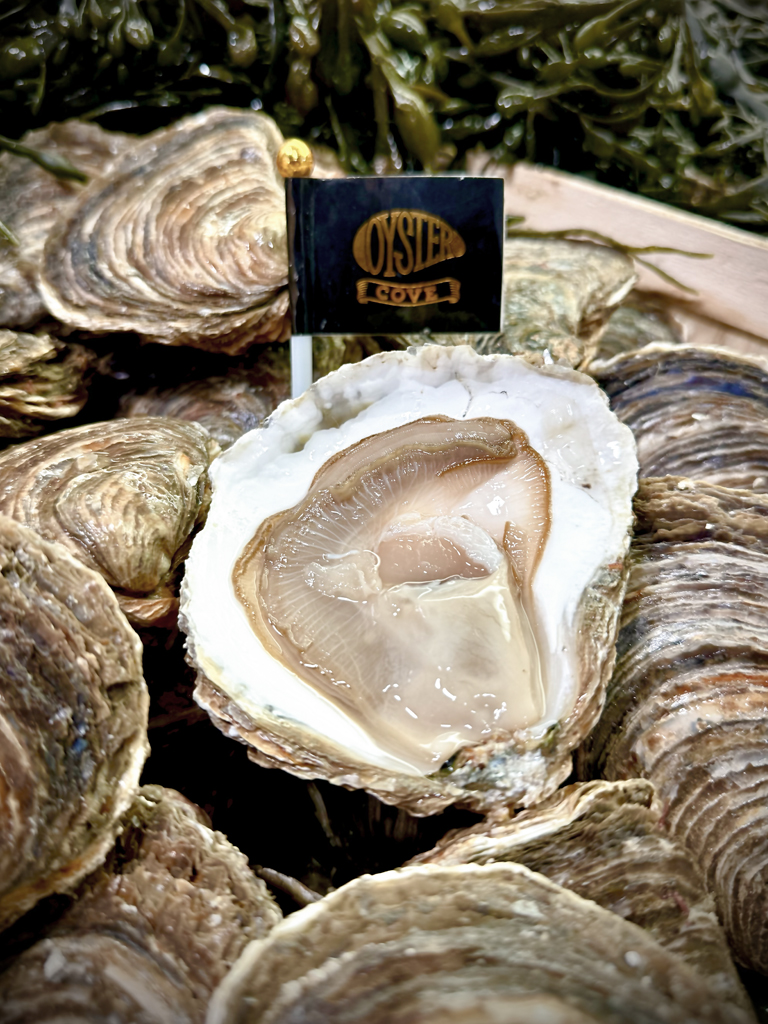
Bunny Ho started running Oyster Cove as a caterer. “When we started the business ten years ago, the market in Hong Kong showed a lot of potential. Oysters were not as popular as now, consumers had little knowledge and choices were limited. We directly imported oysters from farms in France, and ordered a variety of oysters from other countries so we could provide eight to ten types, which gave us an edge.
“Some years later, especially after the COVID-19 pandemic, online platforms and high-end supermarkets started selling oysters, so competition increased, people started eating oysters at home, and our oyster bar business suffered.
“We order once or twice every week direct from the farm in France; around four to five hundred kilos per week. We have the knowledge and connections to order direct, which makes it easier to control the quality and adjust the quantity and types we order,” continues Bunny.
The majority of Oyster Cove orders come direct from three to four farms in France, while oysters from other countries are ordered from local suppliers. Oysters from France are usually the most expensive: “This is because of their quality and the whole system that goes into regulating their cultivation. No other country has such a sophisticated system.”
More open-minded
Bunny continues to explore new oyster producers in France. In the past, some were reluctant to sell overseas because of the resources required for shipping and quality control; but many younger owners are now more open-minded and eager to promote their products: “At the end of the day, it depends on the farm location: some are very remote, and if we cannot arrange local agents to collect the oysters in time, consider transit times and flight schedules etcetera, we cannot partner with them.”
Oysters are influenced by their natural environment — weather, water quality, and factors that affect the nutrients the oysters take in. There are also various raising methods, and Bunny can generally tell this from the label on each box. “Theoretically, you don't need to feed the oysters, because they eat algae and organic materials in the sea; but some farms feed extra nutrients to give a richer taste.”
The Food and Environmental Hygiene Department in Hong Kong forbids live oysters being transferred into fresh water or saline, for safety reasons; and, says Bunny: “if you transfer them into new water, that would completely ruin their freshness and original taste, because the sea water inside the oysters is what makes them valuable.”
Given oysters’ limited “shelf life” of around 10 days after harvesting, the logistics of oyster shipping are critically important. Unlike other seafood such as deep-sea prawns, which can be quick-frozen to extend their storage period, oysters must be shipped and stored fresh — so temperature and humidity stability are very important.
Finally, the oysters are prepared for the table: “To maintain freshness and hygiene while making them easy to eat, we lift off the top shell after scrubbing the outside of the shell, leaving the flesh attached to the adductor. We recommend customers enjoy the flesh immediately after cutting the adductor. If you cut the adductor before serving, the oyster will dry out very quickly.”
While taste is subjective, size matters. With European oysters, the larger they are, the brinier they generally are. That said, not everyone likes briny oyster, and size doesn’t guarantee flavour intensity. “An oyster is like a natural water filter: it becomes what the ocean feeds it. So, if the water quality is good, it will taste sweet, briny and more flavourful. Rain also affects oyster flavour and texture: the more rain, the firmer the meat as it takes in more nutrients; it also tastes creamier,” concludes Bunny.
An oyster’s freshness is measured first by smell, then by poking with your fork. If it’s still fresh, its mantle will move. Appearance is also a good indicator: a fresh oyster should have a glistening sheen to it, and look plump.
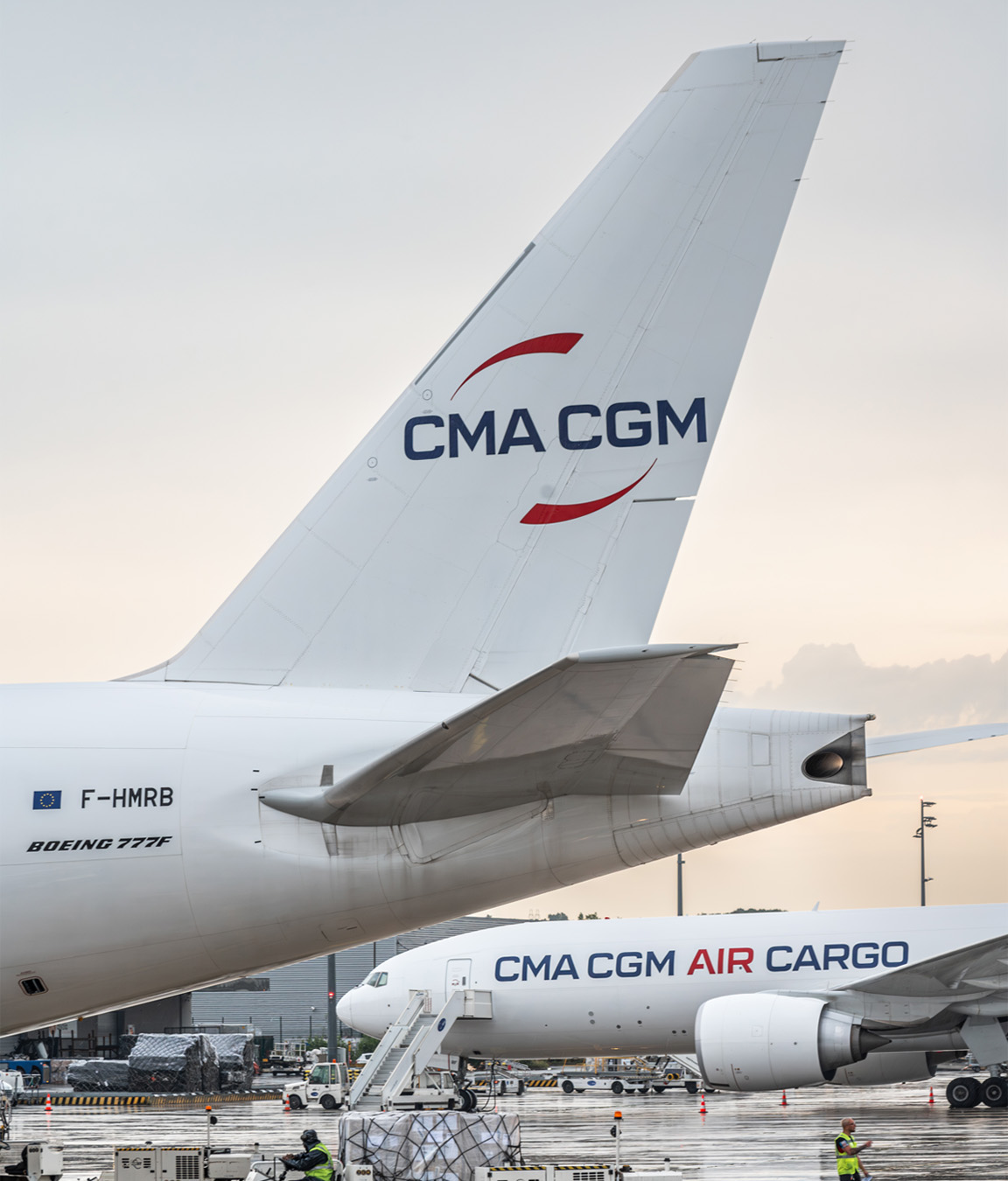
High-value component
CMA CGM AIR CARGO (CCAC) is a relative newcomer to the industry, but is already an established carrier of oysters. Its Product & Marketing Officer, Muriel Vanlède says: “Oysters are a niche, high-value component within the global perishable freight sector. At CCAC, the demand for fresh oysters has remained stable, as part of our weekly shipments to Asia, with spikes during festive and holiday seasons.”
Muriel goes on to say that the logistics involved in transporting oysters is a textbook case of managing cold-chain-sensitive products: “We rely on CO9-certified packaging, a standard in the industry for live shellfish. This maintains humidity and temperature stability and is IATA-compliant for air freight.
“The primary challenge is time sensitivity — oysters must be delivered within a tight window — typically 24-48 hours after harvesting — to maintain freshness and meet regulatory shelf-life limits. CCAC’s approach emphasises collaboration with experienced forwarders and adherence to strict packaging protocols, and has proven effective in minimising spoilage. To date, our spoilage rate is negligible, thanks to these systems and packaging protocols.”
The effort is worthwhile, as oysters command a premium freight rate: “This reflects the added cost of specialised handling, packaging standards, and limited routing flexibility,” continues Muriel.
CCAC is discriminating in its choice of service partners, insisting they meet industry-recognized standards such as IATA CEIV Fresh, and operate dedicated perishable facilities with temperature-controlled docks. “Our partners, such as Hactl, are equipped with temperature-controlled staging areas, fast-track Customs clearance processes, and have trained perishable handlers. This ensures oysters are moved seamlessly from airport to market, minimising dwell time.” While seeing no pressing need for procedural changes, Muriel wants further progress in digital monitoring, real-time tracking, and Customs harmonisation.
She concludes: “Oyster transportation is a precision — driven niche within perishable logistics. Our service model aligns with global seafood freight trends where quality, traceability and speed are the competitive edge.”
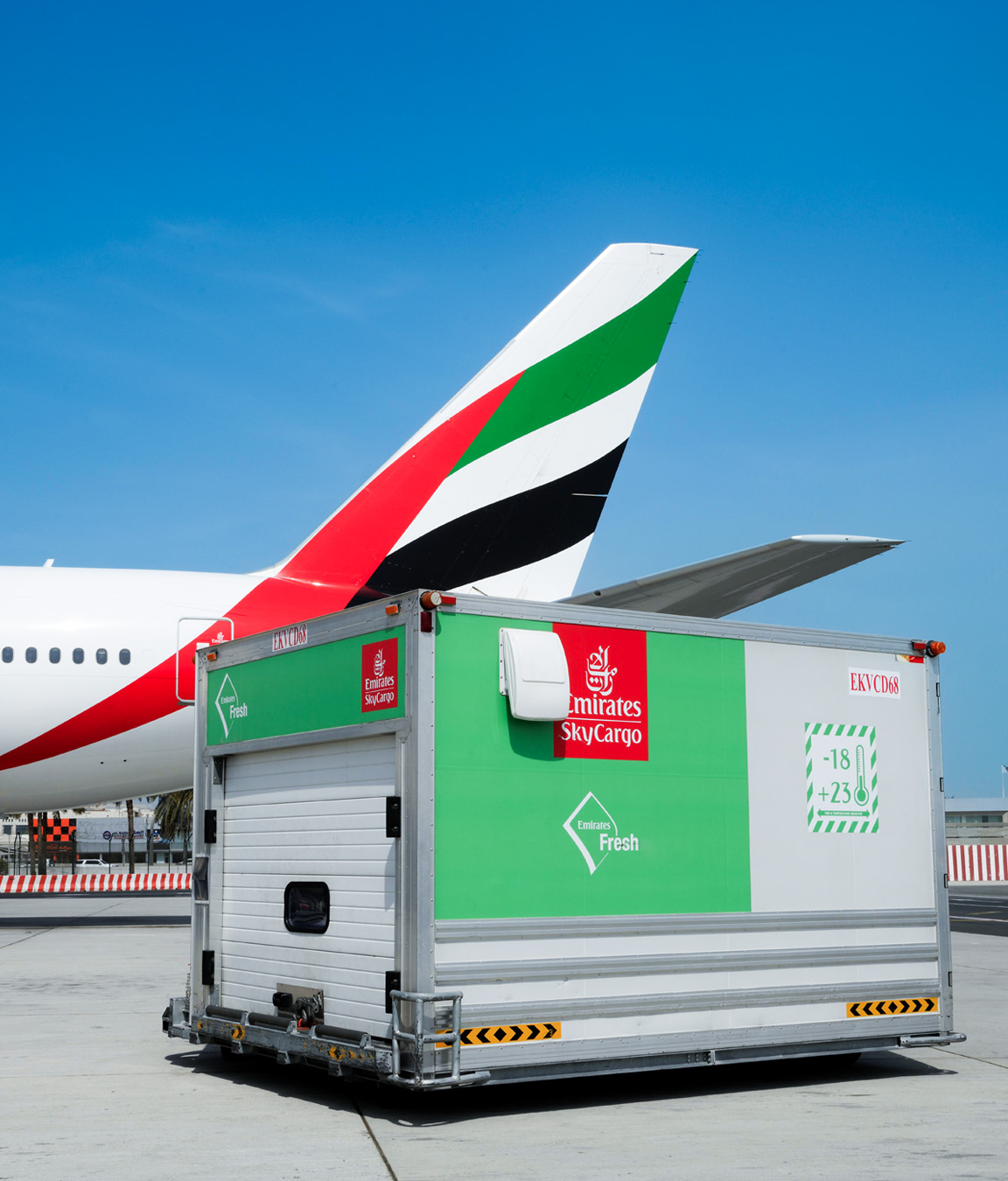
Star of the show
Abdulla Alkhallafi, Vice President of Cargo Commercial, Far East and Australasia at Emirates SkyCargo says oysters are important business for his airline, as part of the 1,000 tonnes of perishables it ships every day:
“Oysters are synonymous with refinement. World-class restaurants, many of which are MICHELIN-starred, offer bespoke culinary experiences where oysters are the star of the show. In fact, oysters are such a coveted delicacy that, in recent years, fine dining establishments have debuted the role of mermmeliers — an expert in oysters who understands the different notes and tastes, in the same way that a sommelier curates wine pairings.
“With that level of focus and attention on oysters, it’s no surprise they are an important commodity for Emirates SkyCargo, requiring precise and expert handling to ensure they are not only protected and safe to eat, but maintain that vibrant flavour they are renowned for.”
Customers deliver the oysters, packed and ready for shipment, in refrigerated trucks. Immediately upon arrival at Emirates SkyCargo’s facility, they are stored in temperature-controlled warehouses. When moving throughout the airport, oyster shipments travel in ventilated cool dollies, which maintain the environment throughout all handling, storage and on-ground movement. “These cool dollies are equipped with a temperature data logger, giving our customers complete confidence that the required temperature has been maintained at all times,” says Abdulla. “Each shipment is given priority transit, including quick ramp transportation, to further minimise risk. Because of the layers of protection we offer and our team of experts, we have almost zero spoilage in the transportation of perishable products, including oysters.”
Emirates SkyCargo’s fleet of over 250 aircraft, high-frequency flight schedule and global network of over 140 destinations mean it can transport oysters quickly, efficiently and reliably. “Often,” continues Abdulla, “Oysters will be harvested in the morning and served in a restaurant halfway around the world that same afternoon.”
Abdulla says another advantage for Emirates SkyCargo is being headquartered in Dubai: due to its location, the city serves as a vital bridge between East and West. “Across both dedicated freighters and passenger aircraft, over 250 flights depart Dubai every 24 hours, enabling us to reach 2/3 of the world’s population within an eight-hour flight time.”
He concludes: “Our mission is to solve the transportation challenges of our customers. As part of this, we have created dedicated and recognisable product verticals such as Emirates Fresh, to ensure partners across the supply chain understand what’s being moved and any specialised handling needed. This helps ensure the efficacy of products as they move along the supply chain.”

